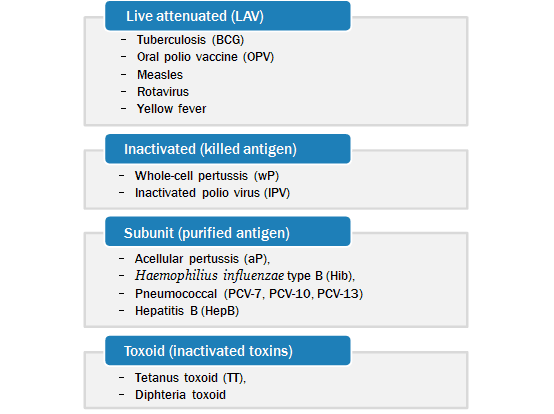Types of vaccine
In module 1 we have learned that vaccines are used to prevent serious illnesses and that regulatory authorities have strict requirements for safety before they are approved for use.
Vaccines require rigorous follow up once approved for use to assess types and rates of adverse events. The development of more effective and even safer vaccines as well as developing vaccines for more diseases that are serious is always ongoing.
There are many types of vaccines, categorized by the antigen used in their preparation. Their formulations affect how they are used, how they are stored, and how they are administered. The globally recommended vaccines discussed in this module fall into four main types.

Mono and polyvalent vaccines
Vaccines may be monovalent or polyvalent. A monovalent vaccine contains a single strain of a single antigen (e.g. Measles vaccine), whereas a polyvalent vaccine contains two or more strains/serotypes of the same antigen (e.g. OPV).
Combination vaccines
Some of the antigens above can be combined in a single injection that can prevent different diseases or that protect against multiple strains of infectious agents causing the same disease (e.g. combination vaccine DPT combining diphtheria, pertussis and tetanus antigens). Combination vaccines can be useful to overcome logistic constraints of multiple injections, and accommodate for a children's fear of needles and pain.

